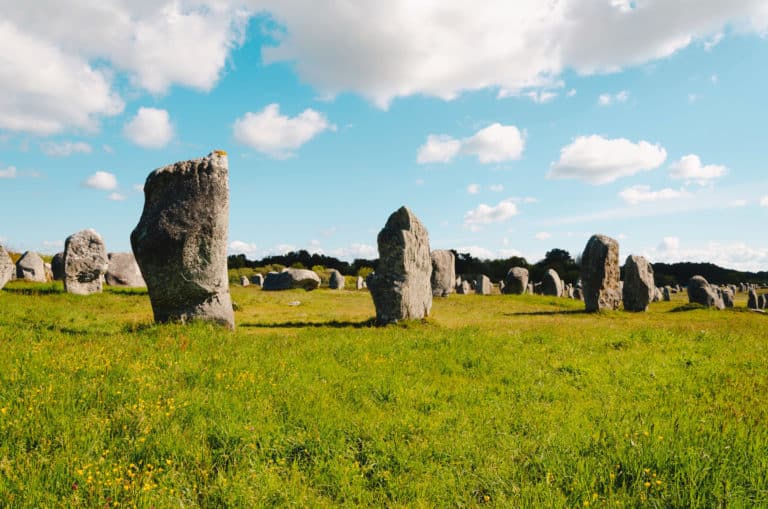An exceptional prehistoric site
The Carnac alignments, made up of thousands of menhirs (large standing stones), stretch over several kilometers and date back to prehistoric times. These geometric formations are scattered over three main sites: Ménec, Kermario and Kerlescan. Each of these sites offers a different perspective on how prehistoric man used these massive stones for rituals or astronomical observations. The Carnac menhirs were erected during the Neolithic period, probably between 4500 and 2000 BC. Their precise location and suggestive alignment raise intriguing questions about astronomical knowledge at the time. Some researchers believe they were used for religious rituals, while others speculate that they served as solar calendars or landmarks for ancient Breton navigators.
A Megalithic Emergence
The origin of the Carnac menhirs is shrouded in mystery. The reasons why these stones were placed in a line remain largely speculative. Was it a desire to mark a sacred place, an astronomical intention or simply a symbolic construction? Although researchers have no definitive answer, these monuments still inspire wonder. The Carnac alignments are impressive not only for their sheer number (over 3,000 stones), but also for the precision of their layout. Each site has its own particular organization, with stones arranged in long straight lines or sinuous curves, creating an enigmatic and mystical landscape.
An Unmissable Tourist Destination
Today, Carnac attracts visitors from all over the world to admire its menhirs. Whether you’re a history buff, curious about a major historical site or a lover of natural landscapes, Carnac offers a unique experience. In addition to the menhir alignments, Carnac offers a wide range of tourist attractions. The Carnac beach, close to the alignments, is ideal for a day of relaxation. The Museum of Prehistory, meanwhile, offers a rich collection of objects and artifacts discovered on the site, enabling visitors to learn more about the history and culture of the first Breton civilizations. Visitors can also take part in guided tours, which shed further light on the mysteries surrounding these giant stones. Whether on foot, by bike or aboard a small train, these tours allow visitors to discover the various alignments while exploring the fascinating history of this megalithic site.
Preservation and Cultural Impact
Carnac is more than just a popular tourist destination. It is also a heritage site of great importance, inscribed on UNESCO’s World Heritage List as a cultural landscape. Preservation efforts are essential to protect this historic treasure from the erosion of time and the effects of mass tourism. Projects have been set up to preserve the integrity of the menhirs, while allowing visitors to continue admiring them. Carnac’s 3,000 menhirs never cease to fascinate with their grandeur and mystery. This emblematic site in Brittany is an impressive testimony to the creativity and beliefs of prehistoric civilizations. In addition to its historical value, Carnac is a place to unwind, where you can immerse yourself in history while admiring a unique natural landscape. Whether you’re passionate about archaeology or simply looking for a magical place to visit, Carnac invites you on a journey to the heart of prehistory. Visit Carnac, let yourself be enchanted by the magic of the menhirs and discover one of Brittany’s best-kept secrets!





